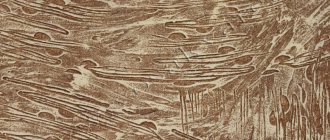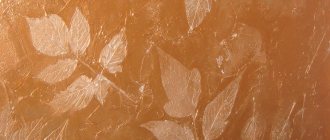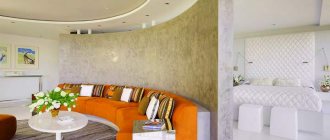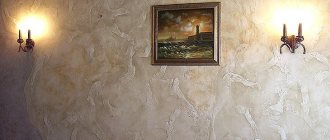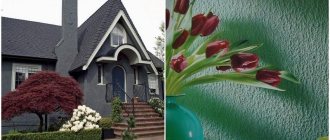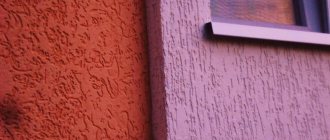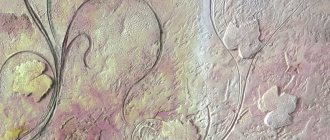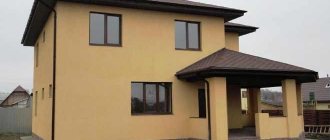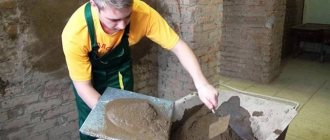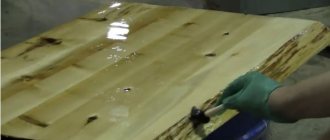Gone are the days when plaster was used exclusively for preparatory purposes when decorating walls in a house. Now this material is widely used for surface finishing. Thanks to its decorative properties, the interior can be given an original and unique look.
Decorative plaster is often confused with liquid wallpaper https://bioplast-russia.ru/. These materials are finishing materials, liquid wallpaper contains cellulose, a natural, harmless material. Decorative plaster contains cement and sand.
Purpose and benefits
Decorative plaster for interior decoration is a finishing coating for surfaces that can be applied with or without initial preparation of the base. This material is often offered in ready-made form, when the mixture is diluted in advance with a solvent or ordinary water under production conditions. After purchase, the mixture is used without modification.
But there are also dry mixtures that require adding liquid according to the instructions before adding them. To give the desired effect, various fillers are added to the plaster - pieces of shells or small pebbles.
This material has the following advantages:
- excellent soundproofing properties;
- resistance to moisture and temperature changes;
- smoothes out unevenness and other defects;
- ease of application and ease of use;
- variety of color palette.
Composition of plaster and decorative inclusions in it
Despite the diversity, all types of decorative plaster are produced in two variations:
- As dry mixtures, in paper bags.
- As ready-made compositions in PVC buckets.
Plastered living room Source myshtukaturka.ru
Stylish, hand-plastered hall Source decorationinfo.ru
Types of material
In stores you can find different types of coatings depending on the composition. Their use has its own advantages and application features.
Acrylic
It is based on acrylic resin, and the material itself can be applied to a wide variety of surface types. As a rule, it is sold in ready-made form. It is characterized by elasticity and durability. Having a low level of moisture absorption, this mixture is resistant to moisture, as well as to changes in the base. At the same time, there are disadvantages:
- rapid flammability;
- possibility of loss of appearance.
Coverage update
Some options for decorative plaster for walls are characterized by minimal financial and time costs, while others, on the contrary, will require considerable time and effort.
- Repainting is the easiest and most unpretentious way to update the interior.
- Complete dismantling of the old layer.
- Leveling with putty, primer, then a layer of finishing material.
Decorative plaster in the bathroom Source bezkovrov.com
The choice of renovation method should be made after the final decision on the final appearance of the room. If it is wallpaper, complete alignment of the walls will be required.
Important! Before filling, painting or applying a new coat of plaster, be sure to prime the surface.
Plastered landing Source www.marmortec.ru
Decorative plastering of apartment walls Source best-stroy.ru
Mineral
The cement powder mixture requires dilution with water. It is easy to apply to the surface. The material is durable, moisture resistant, has good vapor permeability and has thermal insulation properties.
Factors limiting use will be:
- the need for updating once every ten years;
- weak elasticity;
- the need for subsequent staining.
Silicate
It is most often used as facade decorative plaster, since it contains potassium glass, which is harmful to humans. It is advisable to apply it to a mineral mixture or directly to concrete. The benefits include:
- strength and high elasticity;
- high drying speed;
- Possibility of cleaning with water;
- excellent vapor permeability;
- antibacterial effect;
- durability.
However, this is an expensive and dangerous material for humans, requiring certain skills in working with it.
Glass-based silicate
Silicate decorative plaster is mainly used for facade decoration due to the fact that it emits harmful substances. It is based on glass and this results in the coating setting very quickly. Therefore, you need to work with such material quickly and in pairs. However, this mixture also has a number of advantages:
- The shelf life is 60 years.
- Not afraid of mold or mildew.
- Has water-repellent properties.
- Fire safety.
Silicone
Modern material made from silicone-type resins is sold ready-made in a wide color palette.
Main advantages:
- elasticity and high degree of adhesion;
- moisture resistance and the ability to quickly remove dust;
- ease of finishing of any type of base indoors and outdoors;
- durability.
At the same time, the material is not cheap, and before application the surface must be treated with a silicone primer.
Classification of finishing material by base
The following types of materials are used for the manufacture of plaster:
Cement
This finishing material is more suitable for finishing work on the outside of the house, although it can also be used for rough interior finishing of walls. This type of plaster tolerates high humidity very well. Its negative aspects include a long “setting” period (about a month). After interior finishing of the walls with such material, for further work, they will need to be treated with finishing plaster.
Plaster
Plaster of this type is sold in stores mainly in the form of dry mixtures, although it is also found in ready-made paste. As the name suggests, the basis for this finishing material was gypsum, although it was not without plasticizers and retarders. This material is used for finishing bedrooms, living rooms, and corridors. You should not use gypsum plaster to decorate a bathroom or kitchen. This is due to the fact that in rooms with high humidity the material will begin to swell and collapse.
Polymer based plaster
For the manufacture of this material, synthetic substances and artificial resins were used. In finishing work, polymer plaster is not used for rough work, but acts as a finishing material.
Stylish interior with Venetian plaster
Textured
This is a material with a very viscous structure. The composition includes various fillers, such as mica, wood, granite or marble chips. Can be used for both internal and external work. Concrete, brick and even wooden bases are subject to finishing.
Advantages:
- formation of a durable waterproof but breathable coating;
- the ability to imitate other materials, such as leather, stone or wood;
- selection of decorative plaster color by tinting;
- excellent heat and sound insulation properties;
- ease of application and affordable price.
To create the desired pattern, you need to prepare a roller with a spatula and arm yourself with a stencil.
Classification of plaster by purpose
Plaster mixtures for interior finishing work also differ in scope:
Basic plaster
This type, in turn, is divided into the following: simple, improved, high-quality. A simple plaster mixture is intended for finishing industrial and other non-residential premises. Improved plaster can be used for work inside living rooms and public spaces. High-quality plaster mixtures are used for the decoration of theaters, museums, and upscale hotels. Although, recently, a decorative mixture for plaster has been used for the same work.
Artistic plaster mixtures
This type of finishing materials made its debut on the finishing materials market relatively recently, but has already gained some popularity. The difference between the decorative mixture is its wide scope of application. The wall surface treated with such a finishing material itself has an attractive appearance and a certain degree of protection. Some of these mixtures rival the beauty and style of stone-clad spaces.
Plaster with three-dimensional painting in Italian style
Structural
A ready-made material with a base of acrylic or silicate resins is offered for sale. Marble and quartz chips are used as filler, resulting in a grainy structure.
This is a universal, mechanically resistant coating. Applying decorative plaster with your own hands is quite simple; as a result, an original relief is formed.
The resulting layer is characterized by high parameters of breathability and moisture resistance. At the same time, temperature fluctuations do not have a significant impact on quality.
To apply the material you need:
- clean the area;
- dry the wall;
- if necessary, level the surface;
- prime the wall and apply plaster.
Kinds
Decorative plaster is a universal means for performing interior finishing work. The wealth of styles, textures and shades allows you to turn your wildest design fantasies into reality. Great demand has led to the emergence of several varieties, each of which has its own amazing characteristics and appearance.
Art concrete
Decorative art concrete is made from cement and gypsum powder with the addition of additives in the form of dyes and fillers. This composition ensures practicality, high performance and aesthetic performance.
Decorative plaster “Art concrete” Source decorazza.
It comes with a soft texture, allowing the reproduction of exquisite textured imitations of smooth concrete, panels, and rivets. The other type is on a durable base, made from a lacquer base that gives elegance and aesthetics. In terms of performance, it is considered an ideal solution for finishing rooms with high humidity. It is used for cladding furniture and creating designer decors.
Another classification occurs according to the type of connecting element. Decorative plaster art-concrete is found:
- Acrylic.
- Mineral.
- Silicate.
- Silicone.
"Lamb"
This type of decorative plaster belongs to the category of textured facing materials. Fits perfectly on uneven surfaces, creating the effect of smooth walls. With the help of the “lamb”, a granular structure is formed. Resembling the wool of a shorn lamb, hence the name of the technique.
A variety of decorative plaster “Lamb” Source fasad-exp.ru
The component that organizes this original effect is quartz or marble chips with a diameter of 1-4 mm. The size of the fractions affects the “texture” of the walls being treated. The smaller the size, the less grainy the result will be.
Classified based on its constituent components. May be:
- Mineral.
- Acrylic.
- Silicate.
- Silicone.
Important! The main advantage of the technique is maximum environmental safety for humans.
See also: Catalog of companies that specialize in finishing materials.
"Fur coat"
The material received its original name due to its external similarity to sheepskin, which is used for sewing clothes. The principle of application is simple: the cement-sand mixture is mixed with fine crushed stone (1-2 mm) and applied to the wall surface. A rough surface is formed. The amount of texture deviation depends on the size of the pebbles. The larger they are, the more prominent the pattern will be, and vice versa.
A separate type of plaster “Shuba” Source zen.yandex.ru
Available in two colors: white and grey. It can be painted after processing and drying or by adding dye at the stage of mixing the solution. The composition is divided into 3 groups:
- Mineral.
- Acrylic.
- Silicone.
Healthy! Of all materials of a similar nature, decorative plaster “fur coat” is the most economical.
Decorative mosaic plaster
This implies a composition of crushed natural stone with astringent components. Crumbs of granite, quartz or more environmentally friendly marble are used as filler. In some cases, malachite or lapis lazuli are added to give a reddish tint. Taking into account the high cost of these minerals, the price of such compositions becomes even higher. Therefore, in most cases, colored quartz particles are used. They are suitable for interior cladding, but outside they will peel off after a few cold seasons.
The most expensive type of decorative plaster, mosaic Source dizajnadvice.ru
Classified by the type of stone added (marble, lapis lazuli, quartz, etc.) or the type of connecting element:
- Acrylic
- Mineral
- Silicone.
Decorative plaster in the bathroom Source www.dizainvfoto.ru
For interior work, fine-grained and fine-textured compounds are used. Mixtures with a fraction size of more than 3 mm. most often used for exterior decoration.
Venetian
To get a beautiful coating, you need to purchase a transparent ready-made mixture and add one or more colors to it. To give the surface the necessary effects, the material is applied in layers, and protective wax or varnish is placed on top.
This plaster contains marble particles and lime. If necessary, you can get a marble or glossy surface. The applied composition dries quickly with the possibility of forming a mosaic-type relief. Among the qualities of such a durable coating are environmental friendliness, fire safety, resistance to wear and moisture.
Work on applying decorative plaster requires certain skills. The quality of the final result depends on a number of factors. Follow the step-by-step technology and the end result will definitely not disappoint you.
When applying, the following sequence of actions must be observed:
- Clean and level the walls;
- Select areas up to 1 m in size, and after drying, apply the first layer;
- For the first coating, continuous application technology is used, and all subsequent layers are applied in strokes. Movements should be small. By adjusting the degree of pressure, you can change the texture of the coating;
- Smooth the coating over the area. Repeat steps over the entire surface;
- Allow the plaster to dry;
- Polish and apply wax or varnish to protect. As a result, you can get a coating like the one in the photo of decorative plaster.
Using modern methods of finishing walls and facades, you can create a beautiful interior, distinguished by originality and comfort. Decorative plaster helps solve this problem in the most effective and visually attractive way.
Decorative effect – Pearl (Marakesh plaster)
Effect - Pearl
Studying the stunning and enchanting interior look created using the effect of Marakesh decorative plaster, called “Pearl,” you can’t help but get the feeling that such work is only possible for painting professionals with high experience. However, this is just a misconception. In our office you can acquire decorating skills absolutely free.
| Short review | |
| Required material and its consumption per m2 |
|
| Required tools and related products |
|
| Necessary base preparation | A smooth, durable surface prepared for painting, preferably reinforced with fiberglass. |
| Type of decorative surface | Textured (relief) decorative plaster |
| Drying time | 24 hours |
Obtaining the effect of decorative plaster is achieved using the following method:
- The surface is first impregnated with Acryl-Primer to remove dust and improve the adhesion of the material.
- After the soil has dried, Marakesh decorative plaster is applied using a trowel and spatula in an even thin layer and left to dry for 12 hours. After the prescribed time, apply the second layer of the “Pearl” decorative plaster effect using a sea sponge using the tamponing technique. After a few minutes, smooth the surface. When working on a large area, it is recommended to leave a “torn edge” to connect the fragments.
- After 24 hours, Matte and Valencia varnishes are applied, carefully soaking the decorative sponge. The sequence of matte and glossy varnishes is at your discretion.
The effect of Marakesh decorative plaster, called “Pearl,” has an impressive list of parameters inherent in modern finishing materials. In addition to the aesthetic beauty of semi-precious polished stone, you get moisture and water resistance, resistance to damage, environmental friendliness and durability for at least 15 years. The material is also repairable, which is a huge advantage over tiles, wallpaper and plastic.
The price of Pearl - the effect of Marakesh decorative plaster depends on the colors and shades of varnishes, their use in general, as well as the thickness of the layers and the severity of the relief, from 300 rubles per square meter.
Photo of decorative plaster
| European-quality renovation from A to Z If you know how to hold a hammer, spatula, screwdriver in your hands, then you have every chance to earn from 80,000 rubles/month in the conditions of the global crisis! Read more >> |
